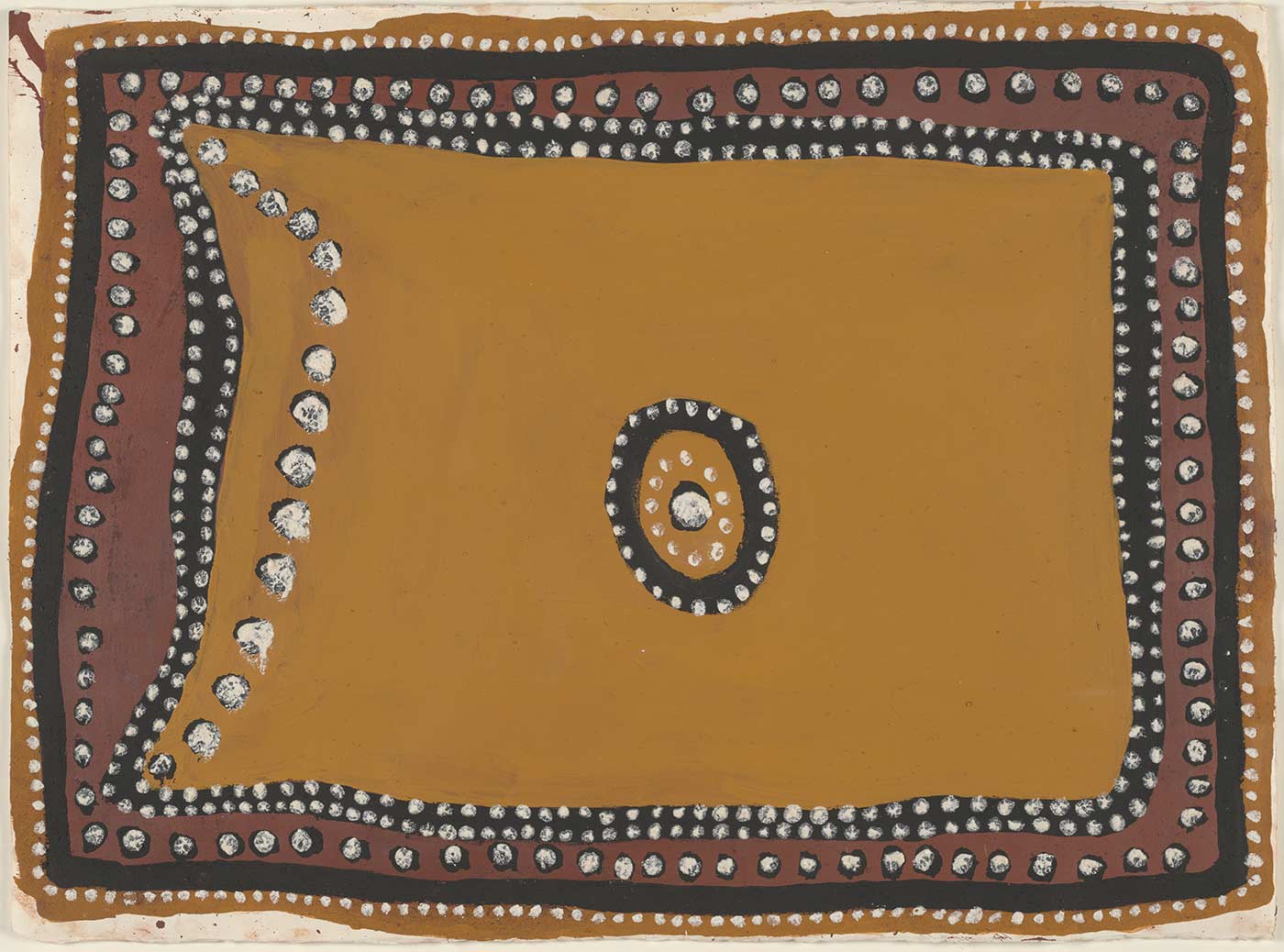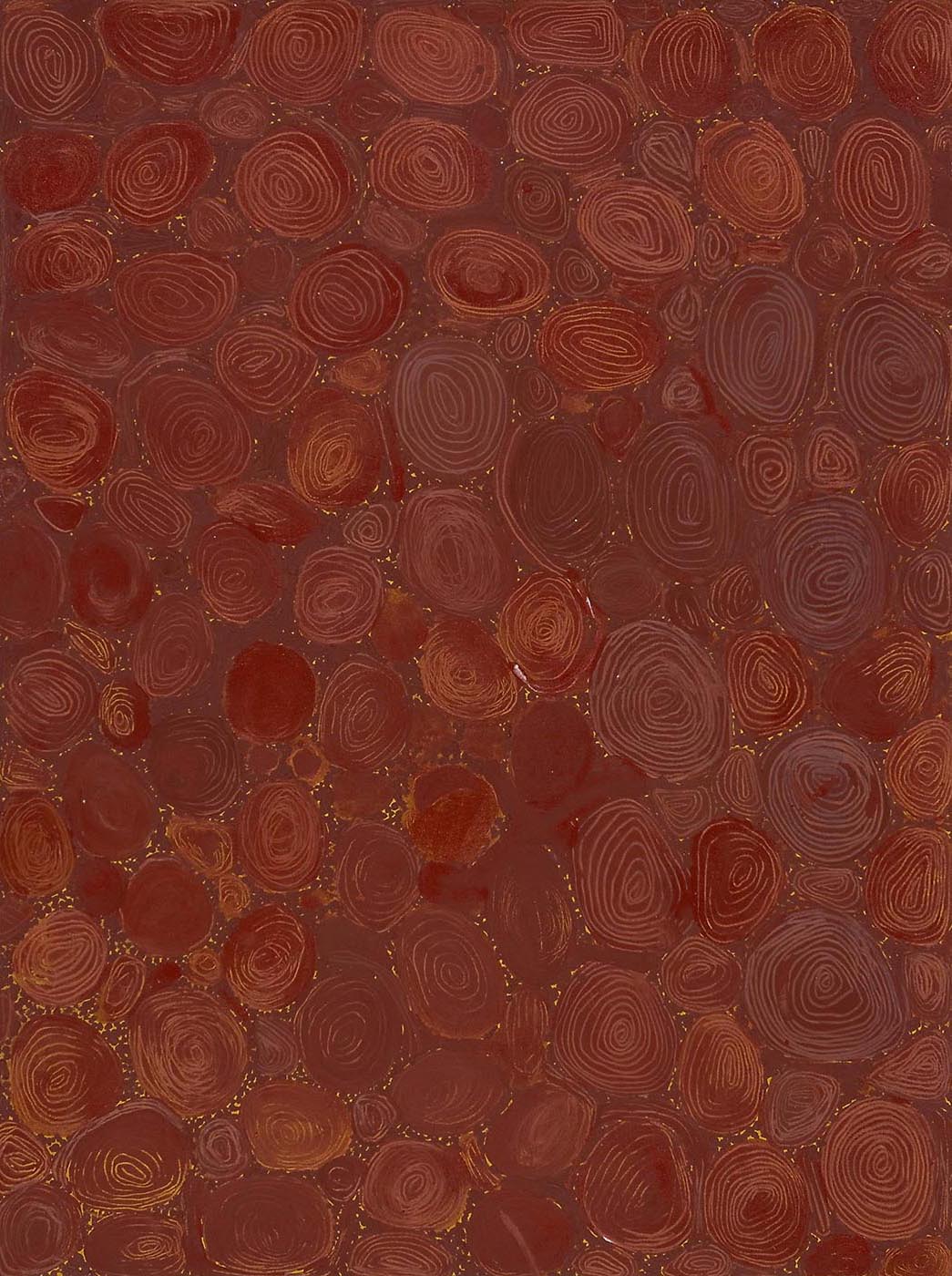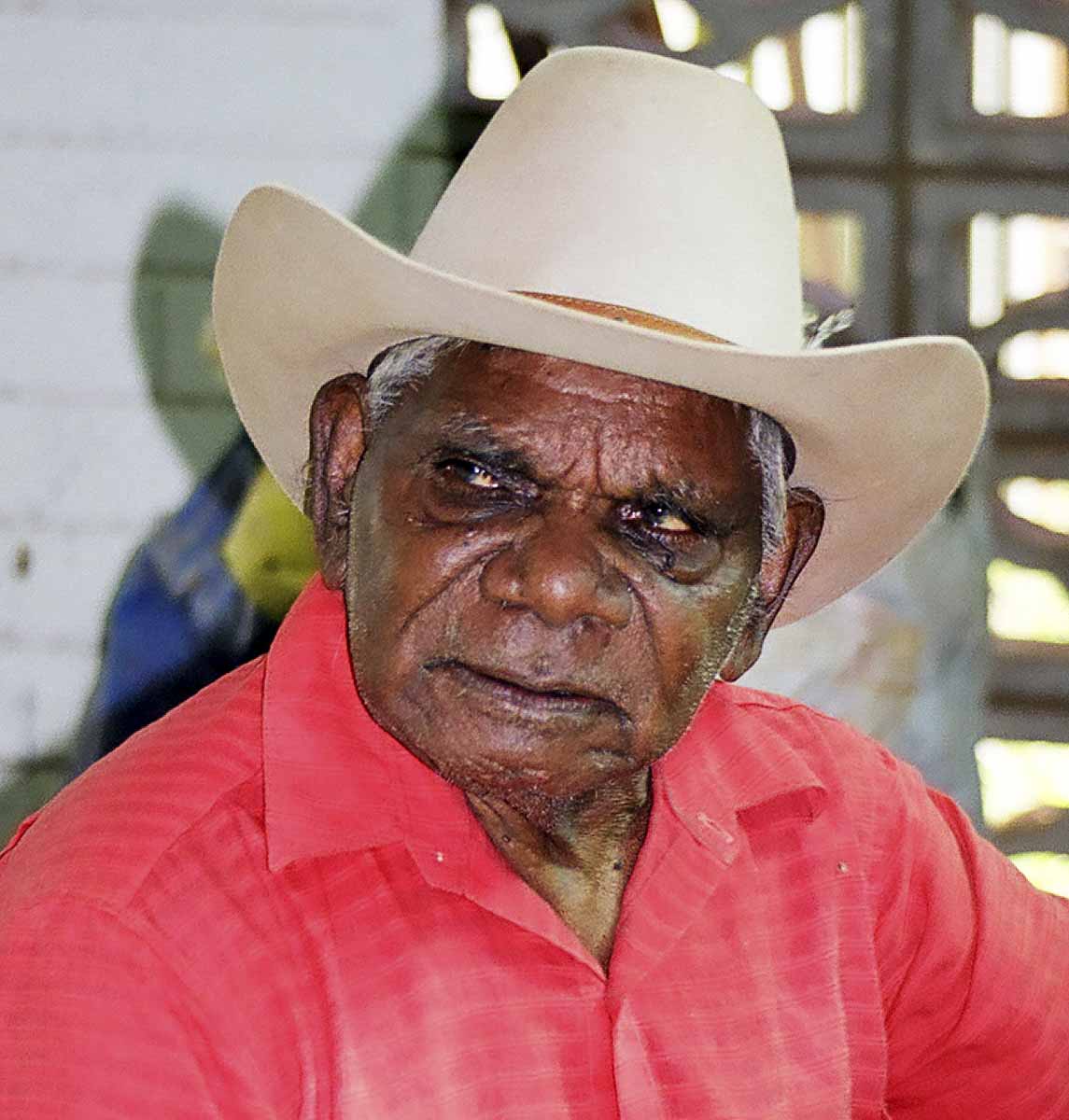Clifford Brooks, Wiluna, 2006:
My old man [Rover] told me, ‘We gotta do painting and tell our stories through there.' Might as well do it through arts so the whole world can hear us.
Rover Thomas

Rover Thomas was born at Yalta, a soak six sandhills away from Kunawarritji (Well 33) on the Canning Stock Route. After the death of his parents, Rover walked to the stock route well and was picked up by drovers.
His adult life was spent in the Kimberley, where he worked first as a stockman and later as an artist.
He was reunited with his desert family later in life; and in 1995 Rover returned to his desert country one last time, travelling back to Kunawarritji and to Yalta, his birthplace and the burial place of his parents.
Rover Thomas is one of Australia’s most important artists. One of the first two Indigenous artists to represent Australia at the 1990 Venice Biennale, his paintings sparked a greater appreciation of Aboriginal art, both nationally and internationally.
Although he later found fame as an East Kimberley artist, Rover was a desert man, and the story of his life is interwoven with that of the Canning Stock Route. He was born and raised in the 1920s and 1930s around the country crossed by the stock route’s middle stretches.
After his parents died, he was picked up by a drover, Wally Dowling, and taken north to Billiluna and the Kimberley. There he became a stockman himself. He eventually married and settled at Warmun (Turkey Creek), and it was here in the 1970s that he began to paint.
Meanwhile, Rover’s desert family moved on and settled in faraway missions and stations. Several became artists themselves.
And so the story of Rover Thomas reveals more than just one man’s remarkable life. It also offers a glimpse into the profound impact the stock route had on the way Aboriginal families spread out over the land, and on the extraordinary artistic movements that followed in their tracks.






